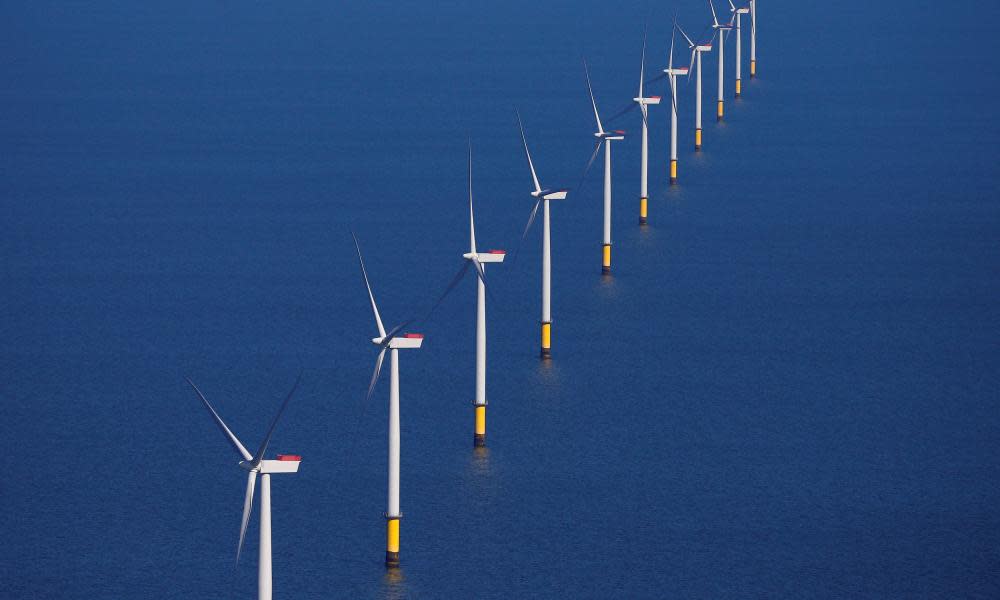New windfarms will not cost billpayers after subsidies hit record low

The UK’s next wave of offshore windfarms will generate clean electricity at no extra cost to consumers after record low-subsidy deals fell below the market price for the first time.
New offshore wind projects will power millions of British homes under “zero-subsidy” support contracts within the next four years, following a record-breaking government subsidy auction.
On Friday, the results of the auction showed offshore wind costs had tumbled by a third to about £40 per megawatt hour, which is less than the price of electricity in the wholesale energy market.
This means households will not face extra costs to support the new projects, which may even help to bring down energy bills.
The prime minister, Boris Johnson, said: “It’s great news that millions more homes will be powered by clean energy at record low prices. Seizing the opportunities of clean energy not only helps to protect our planet, but will also back businesses and boost jobs across the UK.”
New subsidy contracts will be handed to energy companies including Norway’s state-owned Equinor for four new windfarms on remote islands, and another six windfarms off the coasts of England and Scotland. They are expected to start powering UK homes within the next four years.
Most of the projects will receive as little as £39.65 for every megawatt hour of electricity they produce. The most expensive projects to win a subsidy contract will cost £41.61/MWh.
The winning bidders include Equinor, formerly known as Statoil, and SSE, which together plan to build the world’s largest offshore wind project in the Dogger Bank area of the North Sea.
They are aiming to develop an “industrial wind hub” made up of three interconnected offshore windfarms with a total capacity of about 3.6 gigawatts, enough electricity to power the equivalent of 4.5m UK homes.
Eldar Sætre, the chief executive of Equinor, said the Dogger Bank project would be able to deliver low-cost energy due to the “excellent wind speeds, shallow waters and scale”.
He added: “A full-scale development of Dogger Bank will constitute an industrial wind hub in the heart of the North Sea, playing a major role in the UK’s ambitions for offshore wind and supporting the net zero ambition.”
Hugh McNeal, the chief executive of RenewableUK, said the subsidy results marked “a new era of cheap power, as the cost of offshore wind is now lower than the expected market price for power. Reaching that ‘zero-subsidy’ level is made possible by the certainty these long-term contracts provide.”
Offshore wind has plummeted below the cost of fossil fuels in just over half a decade. The earliest offshore windfarms in the UK received contracts worth about £120/MWh in 2015.
Kwasi Kwarteng, the energy and clean growth minister, said: “The support we’re announcing today will mean that over 7m more homes will be powered by renewable energy as we decarbonise our energy system – crucial as we continue on the road to net zero emissions by 2050.”
Two windfarms, the Hornsea 2 project off the Yorkshire coast and the Moray offshore windfarm in Scotland, secured a guaranteed price for their electricity of £57.50/MWh through a similar auction two years ago.
The sums were nearly half the £92.50/MWh awarded the year before to Britain’s first new nuclear power site in a generation, Hinkley Point C. The plummeting cost of offshore wind is attracting more interest from major energy companies.
Earlier this week, the Crown Estate opened what is expected to be its most competitive leasing round for new seabed licences to host the next generation of wind projects.

 Yahoo News
Yahoo News 
